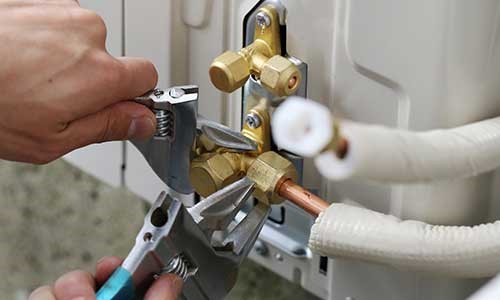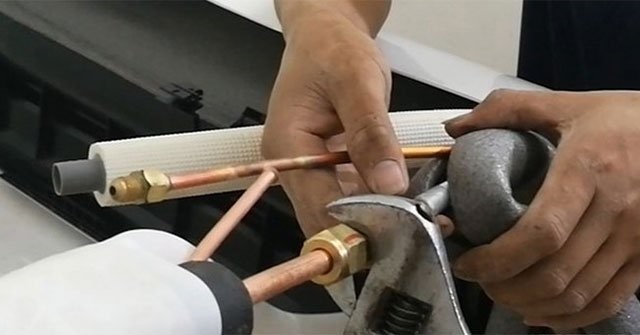Why is copper piping used in air conditioning?
At a rough estimate, 99 per cent of the air conditioning systems in the world use copper pipes to transfer refrigerant gases between the indoor and outdoor units and in the internal heat exchanger. Given the availability of modern alternatives, including aluminium and rubber composite, there must be some very persuasive reasons for this almost total domination of the market.

Image Credit
Merchants such as Watkins and Powis stock piping for all kinds of applications, including the supply of drinking water, general plumbing and waste disposal, but there are four main reasons why copper pipe is still the preferred material for air-conditioning and is unlikely to be replaced in the foreseeable future.
Conductivity
Air conditioning needs to respond quickly to changing temperatures. This could require significant energy consumption were it not for copper’s ability to conduct heat rapidly and efficiently. Only diamond and silver have greater conductive capacity; naturally, these are ruled out on the grounds of cost.
Strength and flexibility
Having established that copper’s conductivity makes it ideal for its function, we need to look at the practicalities of installation. A weaker material would be at risk of cracking, but copper is strong. This means it can be manipulated and bent at whatever angles the available space requires. It is also particularly well suited to soldering at a relatively low temperature, making joins and repairs much easier than they would be with aluminium, for example. Aluminium would need a torch temperature of 300°.

Image Credit
Price
Copper is not the cheapest kind of piping available. Aluminium is about a quarter of the cost; however, copper is easier to install because it doesn’t need specialist tools and skills. It is also longer-lasting, meaning that it is very cost-efficient in the long term.
Corrosion resistance
Copper is at very low risk of reacting with chemicals and other gases or liquids. It is naturally resistant to corrosion, whereas many other materials are vulnerable. Due to the function it performs, it is in perpetual contact with air and water – both hot and cold – and the refrigerant gases. It can withstand the effects of so much traffic without wear or damage.
Science has yet to come up with an affordable replacement for copper piping in air conditioning and there is currently no urgent need for it to do so. Copper remains king.
